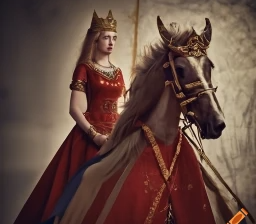Shownotes/Blogpost
The Arabian desert has been known as just that – a desert – including in archaeology. It was thought that there had been no iron-age activity in the area (the iron-age was around 1200 to 500 BC). However, research conducted over the past 30 years or so has slowly changed the knowledge and understanding of the habitation and culture of this area. And not just from the iron-age but long before that!
Thousands of stone structures, first discovered in the 1970s, and which are from 6500 to 2800 BC through to the present, have been identified across the region, as well as the whole of the Arabian Peninsula. They range from burial markers, tower and pendant tombs and open-air structures, also known as gates.
The gates are now known as mustatils (meaning rectangle in Arabic). Studies of these structures conducted using satellite imagery and aerial surveys, identified almost a 1,000 mustatils in AlUla and Khaybar areas of Saudi Arabia. An additional 39 mustatils were found through ground-surveys of AlUla, which revealed a number of previously unknown features. Recent excavations now show that the mustatils – also known as desert kites – functioned as ritual structures in the 6th millennium BC, making them, one of the earliest and largest ritual monuments. This means that Arabia housed one of the earliest ritual monument sites, older than the Stonehenge and the Egyptian Pyramids.
While some observers had suggested that the mustatils served as animal pens or traps, the researchers of this new study say that their walls were not high enough to contain animals. Instead, they point to ritual activity, as is evidenced from cow, goats, sheep and gazelle bones, all animals that could have been ritual offerings. However, there were no human remains and there also does not seem to be any domestic occupation of the sites.
What is even more fascinating is that radiocarbon dating of the bones places them to between 5300 to 5000 BC. This means that they are 2,000 years older than the Stonehenge and the Egyptian pyramids.
The mustatils are made from sandstone available in the surrounding landscape and are between 65 to 2,000 feet in length. The study has characterised them into three types: simple, complex and double. Most of them feature certain components such as a head, courtyard, long walls, a base and, in the case of the complex types, a series of associated features including circular cells and niches. The head is generally characterised by a rectangular platform made of either sandstone slabs or local stones and placed higher than other parts of the structure. The overall stone structures have an open, elongated and empty courtyard with the head at the top, as well as a base and boundary walls. Some complex types also have stone structures and standing stone pillars, and some had doorways blocked by the humans who used them, perhaps to indicate that they were no longer in use. It also seems that the empty courtyards were also used at later dates to build funerary structures by subsequent human populations.
Other platforms related to the mustatils have also been found in the same range, many of which are oriented parallel to the mustatil, either next to its base or outside the long wall. The study authors suggest that both the mustatils and these other platforms had some sort of a related function.
The researchers also think that climate variations during the late Pleistocene (which was from around 129,000 years ago), and the Early Holocene (around 11,650 years ago), resulted in migration of people and dispersal of technologies in the region – similar to what has happened everywhere else in the world. The animal bones and horns offer the first evidence of a Neolithic cattle cult in north-western Arabia, considering that cattle was a valuable commodity of the early pastoral inhabitants of that area. This has been obvious from rock art found in the region depicting scenes of both cattle herding and hunting. The mustatils therefore could have functioned as monuments for the cults or as “as territorial markers, potentially denoting ancestral pasturage or some other form of connection with the landscape” according to the study. The authors also suggest that the mustatil tradition may represent the development of cult ideology in Neolithic north-western Arabia. Of course, more research needs to be undertaken to understand human settlements from that time to further clarify the situation. But the concentration of the mustatils suggests a dense occupation of north-western Arabia.
As the authors conclude: “The scale and form of these structures make them unique to the region, highlighting the robust local component of the Arabian Neolithic. As such, mustatils may become key in articulating the regional and inter-regional relationships present in Arabia during the Middle Holocene, and one of the earliest, large-scale monumental building traditions known to date.”
I am pretty sure that we are going to be bombarded with a host of new research and information from the Arabian Peninsula in the near future and I can’t wait.
I hope you enjoy the post and video. You can subscribe to the You Tube Channel for more on science, history and nature and please do check out the website and follow on social media: Twitter // Instagram // Facebook // Reddit. You can check out the audio podcast on: Apple Podcasts // Stitcher // TuneIn // Spotify Title music: Hovering Thoughts by Spence (YouTube Music Archive) Images and source: Thomas, H., Kennedy, M., Dalton, M., McMahon, J., Boyer, D., & Repper, R. (2021). The mustatils: Cult and monumentality in Neolithic north-western Arabia. Antiquity, 1-22. doi:10.15184/aqy.2021.51 and Jebel Dhaya mustatil near Jubbah. Credit: The Holocene 2020 DOI 10.11770959683620950449
The selected Optin Cat form doesn't exist.






